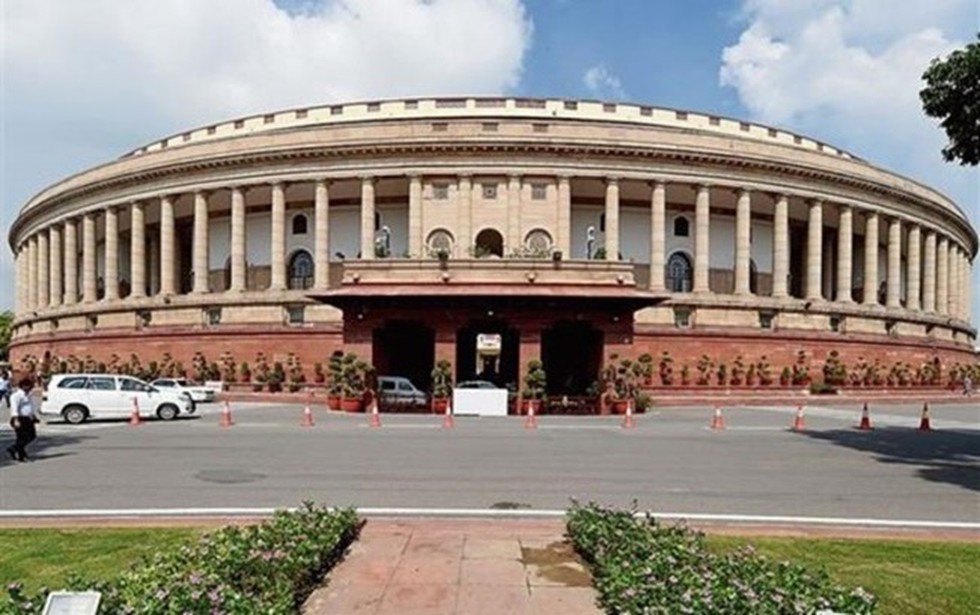
About Panel of Vice-Chairpersons:
- Under the Rules of Rajya Sabha, the Chairman nominates from amongst the members a panel of vice-chairpersons.
- Any one of them can preside over the House in the absence of the Chairman or the Deputy Chairman.
- He/she has the same powers as the Chairman when so presiding.
- He/she holds office until a new panel of vice-chairpersons is nominated.
- When a member of the panel of vice chairpersons is also not present, any other person as determined by the House acts as the Chairman.
- It must be emphasised here that a member of the panel of vice chairpersons cannot preside over the House, when the office of the Chairman or the Deputy Chairman is vacant.
- During such time, the Chairman’s duties are to be performed by such member of the House as the president may appoint for the purpose.
- The elections are held, as soon as possible, to fill the vacant posts.

About Heat Index:
- It provides information about the impact of humidity on the high temperatures and thus provides a feel like temperature for human beings which can be used as an indication for human discomfort.
- It provides guidance towards additional care to be taken by people to reduce discomfort.
- Colour codes used for Experimental Heat Index are as follows:
- Green: Experimental heat Index less than 35° C
- Yellow: Experimental heat Index in the range 36-45° C
- Orange: Experimental heat Index in the range 46-55°C
- Red: Experimental heat Index greater than 55 °C
- The Heat Index is implemented on experimental basis only across the entire country including the State of Andhra Pradesh.
- At present, heat index is derived using the heat index equation similar to what is used by National Weather Service, National Oceanic and Atmospheric Administration (NOAA), USA.
Key facts about IMD
- It is the main agency responsible for meteorological observations, weather forecasting and seismology in India.
- It operates hundreds of observation stations across India and Antarctica.
- Regional offices are in Chennai, Mumbai, Kolkata, Nagpur, Guwahati and New Delhi.
- It has the responsibility for forecasting, naming and distributing warnings for tropical cyclones in the Northern Indian Ocean region, including the Malacca Straits, the Bay of Bengal, the Arabian Sea and the Persian Gulf.
- Nodal Ministry: Ministry of Earth Sciences.

About Credit Guarantee Scheme:
- It aims to strengthen the credit delivery system and ensure smooth access to finance for entrepreneurs engaged in the Livestock sector.
- Objective:
- The main objective is to encourage lenders to focus on the viability of projects and provide credit facilities based on the primary security of the assets being financed.
- By providing access to financial assistance, it promotes investments in various areas of the livestock sector, such as dairy and meat processing, animal feed plants, breed improvement technology, waste management, and veterinary vaccine and drug manufacturing facilities.
- Funding
- The DAHD has set up a credit guarantee fund trust of Rs 750 crore, which will cover up to 25 per cent of credit facilities extended to eligible MSMEs by lending institutions.
- The trust, formed in partnership with NAB Sanrakshan Trustee Company Private Ltd, a subsidiary of NABARD, ensures credit guarantee for MSMEs under the AHIDF scheme.
- Key features include:
- Interest subvention of three per cent
- Loan of up to 90 per cent of the total project cost from any Scheduled Bank, National Cooperative Development Corporation (NCDC).
- Who is eligible for the scheme? The scheme targets underserved sections of society, including first-generation entrepreneurs and underprivileged individuals, who often lack collateral security for their ventures.
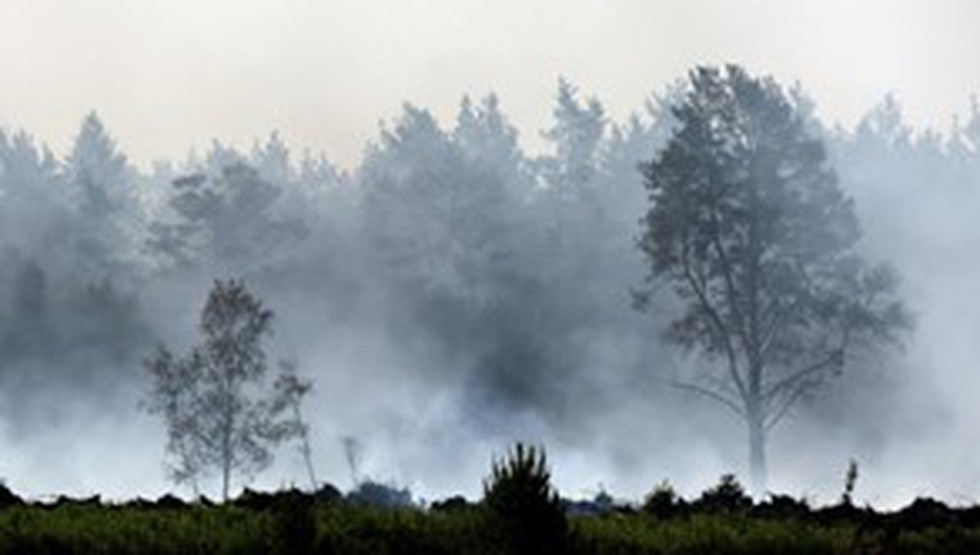
About Zombie fire:
- It is a fire from a previous growing season that can smoulder under the ground which is made up of carbon-rich peat.
- These smouldering fires also produce more smoke because of their lower temperature of combustion.
- Why it occurs?
- As the organic-rich Arctic soils dry up because of changing climate conditions, they can burn slowly and release vast amounts of smoke into the atmosphere.
- One major culprit is the rising temperature: The Arctic is warming nearly four times faster than the rest of the world, a phenomenon known as Arctic amplification.
- Among the changing conditions that favour wildfires are changes in atmospheric circulation that create periods of extreme heat, dry out vegetation and reduce moisture in soils, and, importantly, lead to more frequent lightning strikes that can spark blazes.
- What is the Impact?
- As the Arctic warms and fires move farther northward, peat soils rich in dead plant material burn at an accelerated rate.
- The burning peat also removes the layer insulating permafrost, the region’s frozen carbon-rich soil.
- Northern ecosystems store twice as much carbon in their peat and permafrost as the atmosphere, and both are increasingly vulnerable to fire.
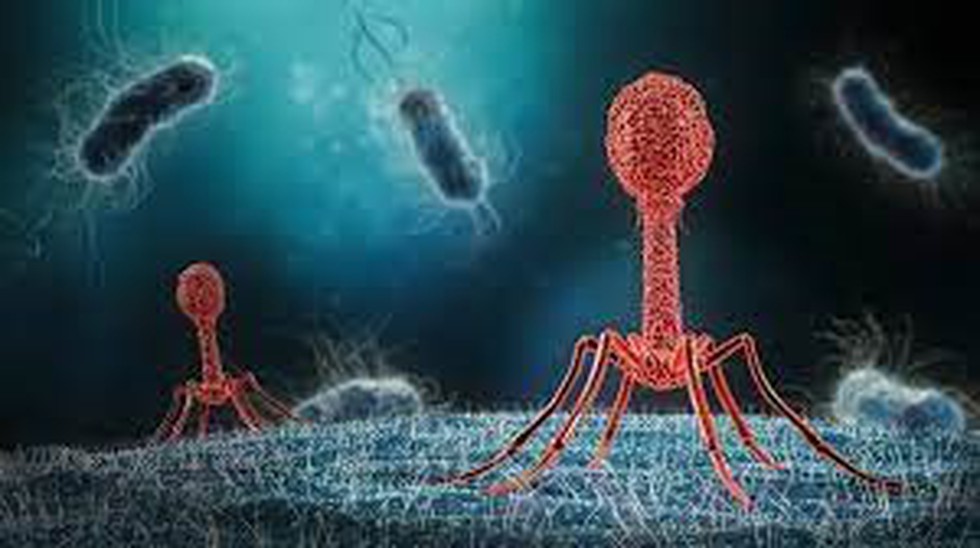
About Bacteriophages:
- It is also called phage or bacterial virus, any of a group of viruses that infect bacteria.
- It was discovered independently by Frederick W. Twort in Great Britain (1915) and Félix d’Hérelle in France (1917).
- D’Hérelle coined the term bacteriophage, meaning “bacteria eater,” to describe the agent’s bactericidal ability.
What are the Characteristics of bacteriophages?
- Thousands of varieties of phages exist, each of which may infect only one type or a few types of bacteria or archaea.
- Phages are classified in a number of virus families; some examples include Inoviridae, Microviridae, Rudiviridae, and Tectiviridae.
- Like all viruses, phages are simple organisms that consist of a core of genetic material (nucleic acid) surrounded by a protein capsid.
- The nucleic acid may be either DNA or RNA and may be double-stranded or single-stranded.
- There are three basic structural forms of phage: an icosahedral (20-sided) head with a tail, an icosahedral head without a tail, and a filamentous form.
How they process in Human body?
- Bacteriophages are harmless to human cells as they do not recognize them as their bacterial prey.
- They work by hunting down bacteria and attaching themselves to the surface of a bacterial cell, before injecting viral DNA material into the cell.
- The viral DNA then replicates inside the bacteria, once enough new viruses have been created inside the bacterial cell, the cell then bursts to release the new viral particles.
- All this takes just 30 minutes, meaning one virus can become many in a couple of hours.
Source : What are Bacteriophages, the ‘good viruses’ that fight bacteria?
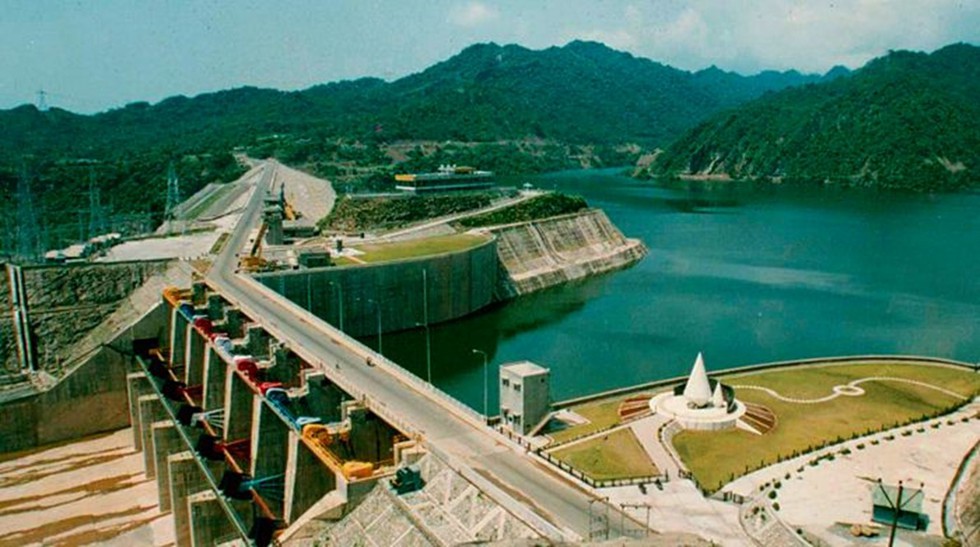
About Ranjit Sagar Dam (RSD):
- The Ranjit Sagar Dam, also known as the Thein Dam, is a major water reservoir and hydroelectric power project located on the Ravi River in the state of Punjab.
- It is located about 24 kilometres (15 miles) from the international border with Pakistan.
- The dam was constructed to harness the waters of the Ravi River and was completed in 2000.
- It is a concrete gravity dam with a height of about 162 meters (531 feet) and a length of approximately 518 meters (1,699 feet).
- The dam creates a vast reservoir known as the Ranjit Sagar Lake or Thein Lake. The reservoir has a storage capacity of around 0.97 billion cubic meters (789,000 acre-feet) and helps regulate water flow for various purposes.
- It has an installed capacity of 600 megawatts (MW).
Key facts about Ravi River:
- Origin: It originates in the western Himalayas in the Multhan tehsil of Kangra district of Himachal Pradesh.
- It then flows through the Indian state of Punjab and enters Pakistan, where it eventually joins the Chenab River in the province of Punjab.
- Length: The total length of the Ravi River is approximately 720 kilometres (447 miles). Around 158 kilometres (98 miles) of the river's course lie in India, and the remaining 562 kilometres (349 miles) flow through Pakistan.
- Tributaries: The Ravi River is fed by several tributaries, including the Bhadal, the Ujh, the Tarnah, and the Basantar rivers in India, and the Aik, the Bara, and the Beas rivers in Pakistan.

What is mRNA?
- Messenger RNA (a mRNA) is a type of single-stranded RNA involved in protein synthesis.
- mRNA is made from a DNA template during the process of transcription.
- The role of mRNA is to carry protein information from the DNA in a cell’s nucleus to the cell’s cytoplasm (watery interior), where the protein-making machinery reads the mRNA sequence and translates each three-base codon into its corresponding amino acid in a growing protein chain.
- So, mRNA really is a form of nucleic acid which helps the human genome, which is coded in DNA, to be read by the cellular machinery.
About mRNA Vaccines:
- mRNA vaccines work by introducing a piece of mRNA that corresponds to a viral protein, usually a small piece of a protein found on the virus’s outer membrane.
- By using this mRNA, cells can produce the viral protein.
- As part of a normal immune response, the immune system recognizes that the protein is foreign and produces specialized proteins called antibodies.
- Once produced, antibodies remain in the body, even after the body has rid itself of the pathogen, so that the immune system can quickly respond if exposed again.
- Antibodies help protect the body against infection by recognizing individual viruses or other pathogens, attaching to them, and marking the pathogens for destruction.
- If a person is exposed to a virus after receiving mRNA vaccination for it, antibodies can quickly recognize it, attach to it, and mark it for destruction before it can cause serious illness.
- Individuals who get an mRNA vaccine are not exposed to the virus, nor can they become infected with the virus by the vaccine.
- How are mRNA vaccines made?
- To make an mRNA vaccine, scientists must first identify a protein on the outside of the virus that the body’s immune response will respond to (the “target” protein).
- The protein they choose must be sufficiently different from proteins on the outside of the body’s own cells, so the immune system only attacks the virus.
- They then identify the DNA that has the information for making the target protein.
- Scientists use the DNA to produce the mRNA for the target protein.
- Once enough mRNA has been made, the DNA is broken down to ensure that only the mRNA is packaged in the vaccine.
- The speed and efficiency of this process can make large amounts of mRNA in a short period of time.

About Cinematograph (Amendment) Bill 2023:
- It seeks to amend the Cinematograph Act 1952.
- It has provisions for harsher punishment for film piracy and the introduction of new-age categories for classifying films.
- Film Classification:
- It has provisions to classify films on the basis of age group instead of the current practice of rating them "U" (unrestricted public exhibition), "A" (restricted to adult audiences), and "UA" (unrestricted public exhibition subject to parental guidance for children below the age of 12).
- The amendments seek to add new classifications – ‘UA-7+’, ‘UA-13+’, and ‘UA-16+’ in place for 12 years.
- It also seeks to bring about uniformity in categorisation of films and content across platforms.
- Stricter Laws Against Piracy:
- The Bill holds stricter punishment for those responsible for piracy. This includes three years of imprisonment and a Rs 10 lakh penalty for those engaged in piracy.
- Once the Bill is released, the act of piracy will be considered an offence legally and will include even transmitting pirated content punishable.
What is the Cinematograph Act 1952?
- It was enacted by the Parliament to ensure that films are exhibited in accordance with the limits of tolerance of Indian society.
- It establishes Central Board of Film Certification(CBFC, popularly known as the censor board) appointed by the Central Government to sanction and certify films.
- The Board scrutinizes the film in its entirety and based on the contemporary standard of Indian society following the procedure laid down under the Act.
- Board can either make a speaking order of rejection or grant the certificate, which shall be valid for ten years.
- The Act also authorizes the police to conduct search and seizure if the film is being exhibited in contravention of any of the provisions of the Act.

About Rule 267:
- According to the Rules of Procedure and Conduct of Business in the Council of States (Rajya Sabha), Rule 267 relates to the suspension of rules.
- It says, “Any member may, with the consent of the Chairman, move that any rule may be suspended in its application to a motion related to the business listed before the Council of that day, and if the motion is carried, the rule in question shall be suspended for the time being; provided further that this rule shall not apply where specific provision already exists for suspension of a rule under a particular chapter of the Rules.”
- Simply put, under Rule 267, Rajya Sabha MPs can submit a written notice to suspend all listed business in the House and discuss an issue of importance that the country is facing.
- A motion under Rule 267 indicates that a matter was serious enough for the House to suspend its normal business to take it up.
- The rule further says, "The Chairman alone has the power to give consent for moving of a motion for suspension of a rule, and it is for the House to decide whether a particular rule should be suspended or not."
- Thus, it is the discretion of the Chairman to decide whether to allow a motion under Rule 267, as it states that “the consent of the Chairman" is required for a member to bring such a motion.
- However, this rule does not apply where specific provisions already exist for the suspension of a rule under a particular chapter of the rules.
- Who can issue Rule 267?
- Any member of the Rajya Sabha can issue a notice to the Chairperson for a discussion on any subject under Rule 267.
- When was Rule 267 last invoked?
- The last time it was used was in November 2016, when the Upper House invoked Rule 267 to discuss demonetisation.
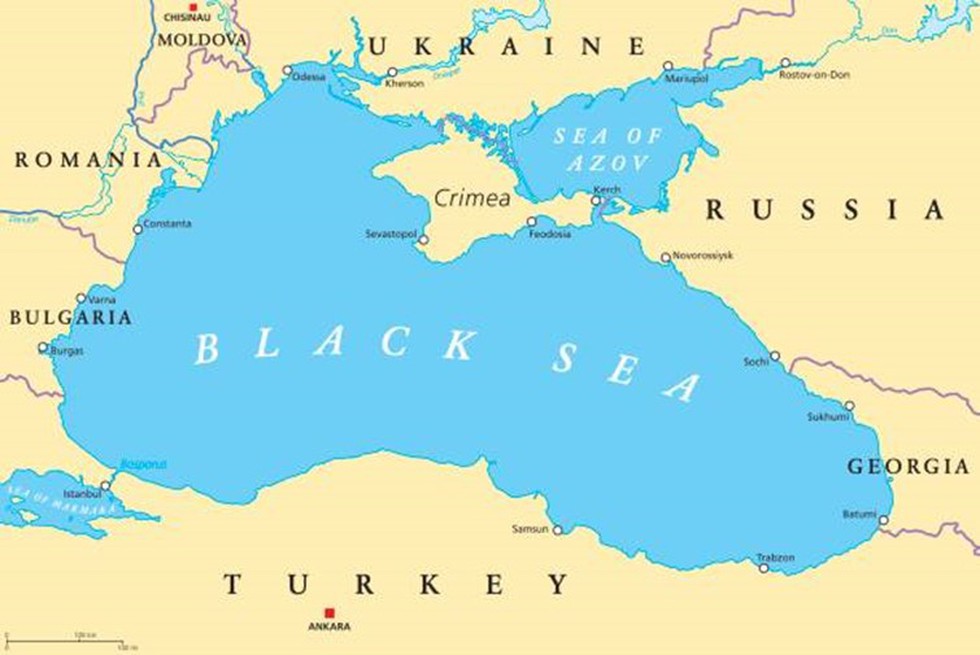
About Black Sea:
- It is a large inland sea located in southeastern Europe.
- Bordering countries: It is bordered by six countries, Ukraine to the north, Russia to the northeast, Georgia to the east, Turkey to the south, Bulgaria to the southwest, and Romania to the west.
- It is connected to the Mediterranean Sea through the Bosporus Strait, the Sea of Marmara, and the Dardanelles Strait.
- It covers an area of approximately 436,000 square kilometres (168,000 square miles).
- The Black Sea receives freshwater inflows all around the basin, but the important ones (Danube, Dniepr and Dniestr) discharge into the north-western coastal waters.
- Limited Oxygen Levels:
- The Black Sea's deeper waters have lower levels of oxygen due to its unique geological and hydrological conditions.
- The lack of oxygen in the lower layers creates a distinct environment, and it is one of the world's largest anoxic basins, meaning it has areas with very little dissolved oxygen.
- Islands: It contains several islands, with the largest ones being Snake Island (Ukraine), Giresun Island (Turkey) and St. Ivan Island (Bulgaria).


.png)


























































































































































.png)
.png)
.png)
.png)
.png)


.png)
.png)
.png)





.png)
.png)






.png)
.png)
.png)
.png)
.png)
.png)
.png)
.png)
.png)

.png)







.png)
.png)


.png)
.png)
.png)


.png)

.png)
.png)





.jpg)

.png)
.png)


.png)

.png)
.png)
.png)

.jpg)

.jpg)


.png)

.png)
.png)
.png)
.png)
.png)
.png)
.png)
.png)
.png)
.png)



.png)





.png)
.png)
.png)
.png)
.png)
.png)
.png)
.png)
.png)
.png)
.jpg)
.jpg)

.png)
.png)
.png)
.png)
.png)
.png)
.png)
.png)
.png)
.png)
.png)
.png)
.png)
.png)
.png)
.png)
.png)
.png)
.png)
.png)
.png)
.png)



.png)
.png)

.jpg)
.jpg)


.jpg)
.jpg)
.jpg)
.jpg)
.jpg)

.jpg)








.jpg)
.jpg)
.jpg)
.jpg)
.jpg)

















.jpg)
.jpg)







.jpg)


















.jpg)
.jpg)






























































































.jpg)
.jpg)


























.jpg)

.jpg)










.jpg)








.jpg)




.jpg)










.jpg)


















.jpg)












































.jpg)














.jpg)
.jpg)
.jpg)





.jpg)

.jpg)
.jpg)





































































.jpg)


































.jpg)
.jpg)
















































.jpg)












.jpg)


.jpg)




.jpg)
.jpg)
.jpg)

.jpg)
.jpg)
.jpg)
.jpg)

.jpg)
.jpg)
.jpg)

.jpg)
.jpg)
.jpg)
.jpg)
.jpg)
.jpg)
.jpg)
.jpg)

.jpg)


.jpg)
.jpg)
.jpg)
.jpg)
.jpg)
.jpg)
.jpg)
.jpg)
.jpg)
.jpg)











.jpg)
.jpg)





.jpg)
.jpg)
.jpg)
























.jpg)
























.jpg)









.jpg)
.jpg)







.jpg)
.jpg)









































.jpg)
.jpg)
.jpg)
.jpg)
.jpg)

.jpg)
.jpg)
.jpg)
.jpg)
.jpg)


.jpg)
.jpg)
.jpg)
.jpg)
.jpg)

.jpg)
.jpg)
.jpg)
.jpg)
.jpg)
.jpg)
.jpg)
.jpg)
.jpg)
.jpg)
.png)

.png)
.png)

.png)
.png)
.png)
.png)


.jpg)
.jpg)

.jpg)
.jpg)
.jpg)

.png)
.png)
.png)
.png)
.png)
.png)
.png)

.png)
.png)
.png)
.png)
.png)
.png)
.png)
.png)
.png)
.png)





































































-min.png)



.png)




.png)








































